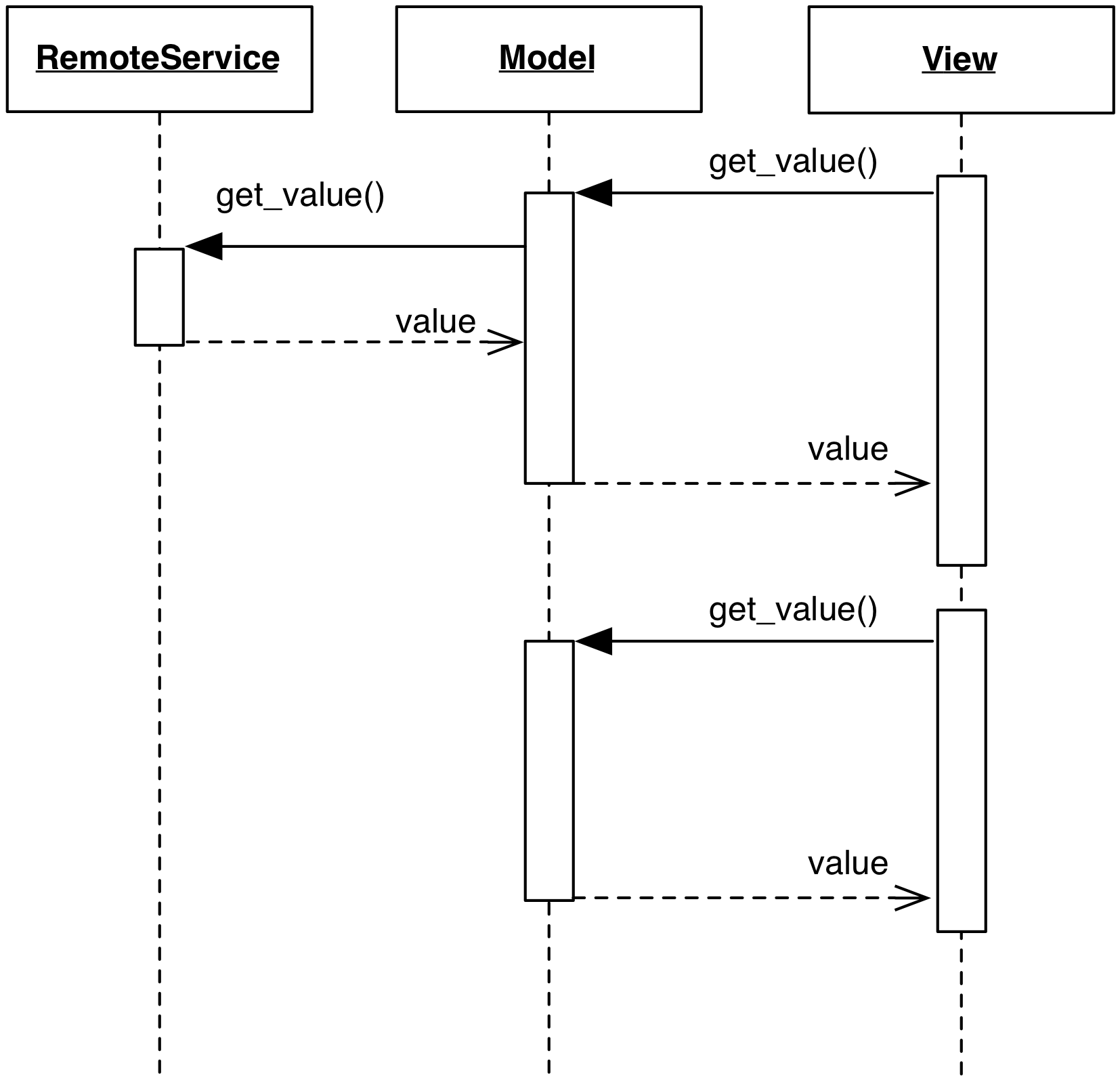2.1.9 Proxy Model
Note: In the context of Qt MVC, a Proxy Model is a Model Pipe design. Django also defines a Proxy Model concept, but it is unrelated to the one expressed here: the application of the Proxy design pattern to a Model object.
Motivation
We want to access an external resource, such as one provided by an HTTP server or a database. Proxy Model encapsulate the logic needed to access the remote service, specifically:
- Issue the request to the remote service
- Handle error conditions
- Convert received data into a representation useful for the client code.
Additionally, the Proxy Model can:
- Throttle an excessive number of requests in a short amount of time
- Cache obtained results and manage the cache expiration
- Observe the remote service for changes, for example through polling on a secondary thread.
Design
The design of a Proxy Model is generally dependent on the service it represents. Interfaces are designed to comply with the abstraction of the remote service. When the client code asks for data, the Model issues the appropriate request to the service provider. Client code is generally unaware of the exact nature of the backend exposed by the Proxy Model.

When the Model implements SQL access to a specific database table, the resulting Proxy Model is normally called Table Data Gateway. An instance of this Model represents the backend database Table as a whole, not a specific row, and its methods provide access to CRUD operations.
Practical example: Django Models
A simple Django Model provides an example of a Proxy Model.
from django.db import models
class Person(models.Model):
first_name = models.CharField(max_length=30)
last_name = models.CharField(max_length=30)
For the class definition given above, Django’s internals create a SQL table
whose columns are defined by the class properties (first_name and last_name).
Instances of the Person class are represented as table rows.
The Person class can be instantiated, stored in the database, modified, or used to retrieve an already present instance.
person = Person(first_name="A.", last_name="Einstein")
person.save()
person.first_name = "Albert"
person.save()
another_person = Person.objects.get(last_name="Galilei")
Under the hood, the Django Model implementation converts the operations into SQL statements.
Practical example: Thrift services
Another example of Proxy Model is provided by Thrift, a cross-language Remote Procedure Call framework. An Interface Definition Language specifies the interface of the remote service
service Calculator {
i32 add(1:i32 num1, 2:i32 num2),
}
which is compiled into python to generate the following code
class Client(Iface):
def __init__(self, iprot, oprot=None):
self._iprot = self._oprot = iprot
if oprot is not None:
self._oprot = oprot
self._seqid = 0
def add(self, num1, num2):
"""
Parameters:
- num1
- num2
"""
self.send_add(num1, num2)
return self.recv_add()
def send_add(self, num1, num2):
self._oprot.writeMessageBegin('add', TMessageType.CALL, self._seqid)
args = add_args()
args.num1 = num1
args.num2 = num2
args.write(self._oprot)
self._oprot.writeMessageEnd()
self._oprot.trans.flush()
def recv_add(self):
iprot = self._iprot
(fname, mtype, rseqid) = iprot.readMessageBegin()
if mtype == TMessageType.EXCEPTION:
x = TApplicationException()
x.read(iprot)
iprot.readMessageEnd()
raise x
result = add_result()
result.read(iprot)
iprot.readMessageEnd()
if result.success is not None:
return result.success
raise TApplicationException(TApplicationException.MISSING_RESULT,
"add failed: unknown result")
The above Proxy handles the complexity of the network exchange, providing a simple interface to client code
result = client.add(3, 4)
References
- Martin Fowler, “Patterns of Enterprise Application Architecture”. Addison-Wesley, 2003.
- Django - https://www.djangoproject.com/
- Apache Thrift - https://thrift.apache.org/